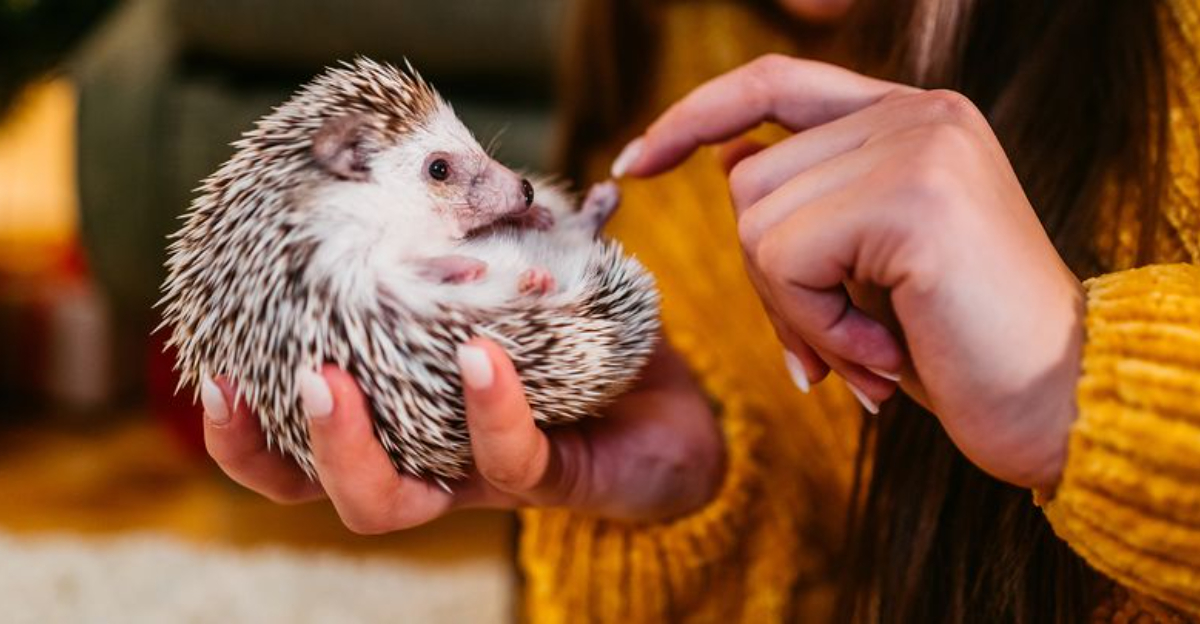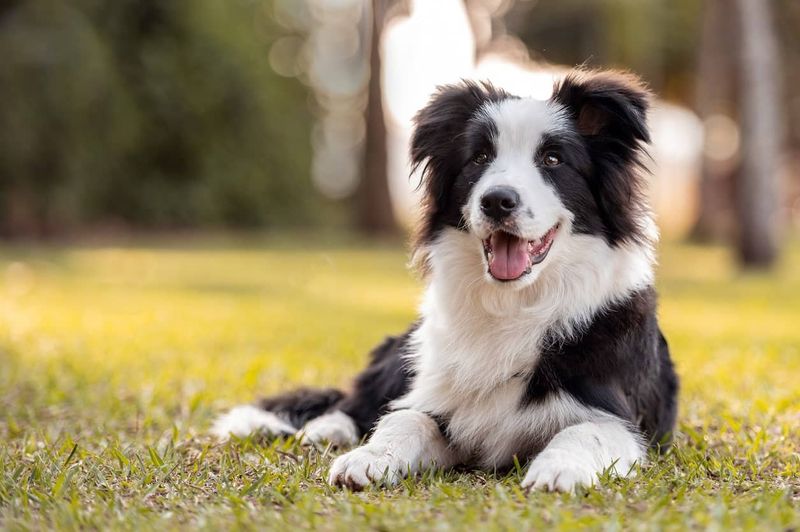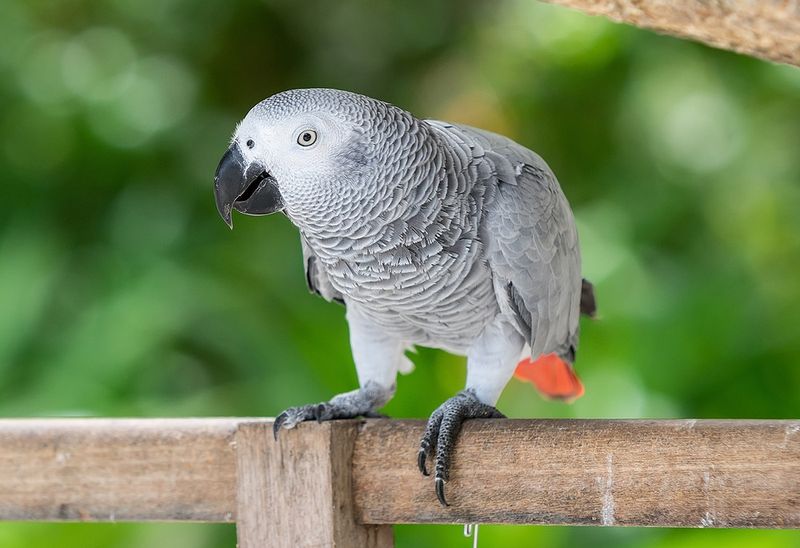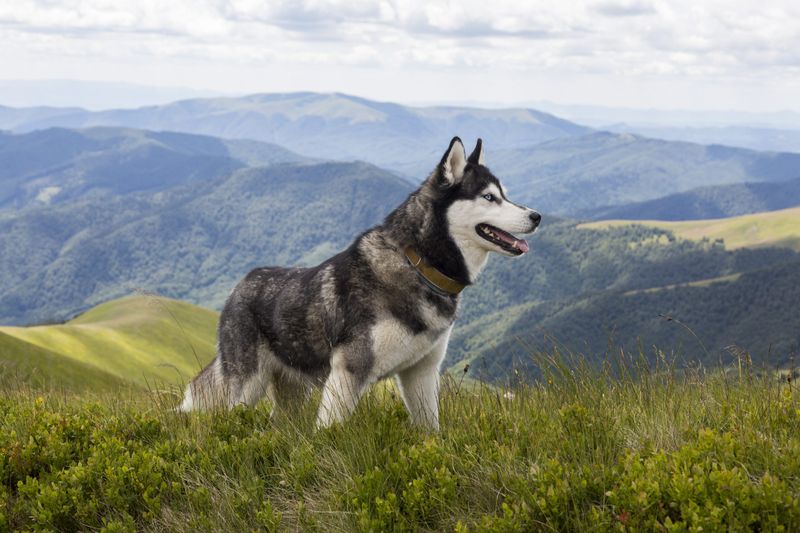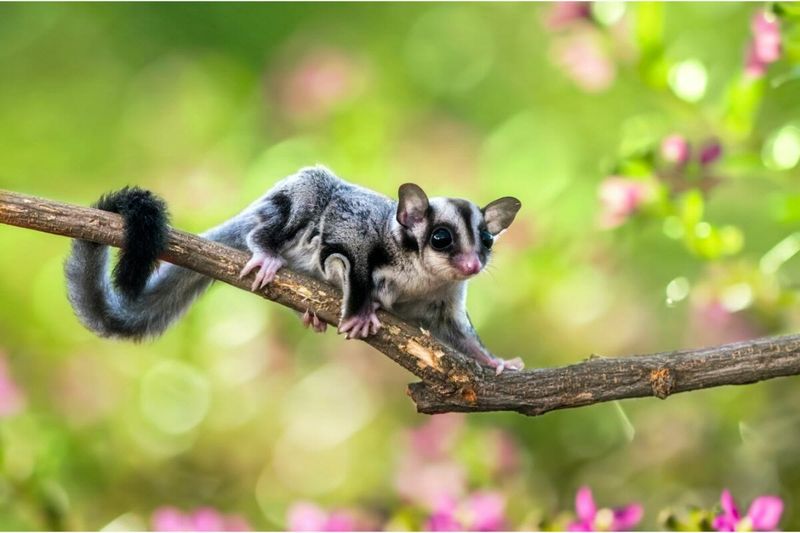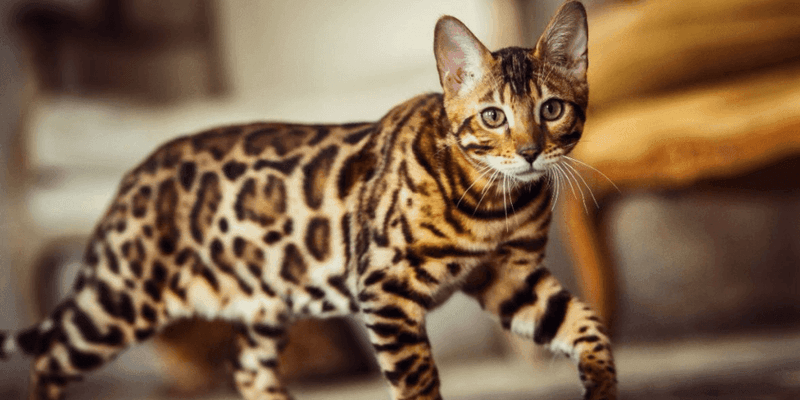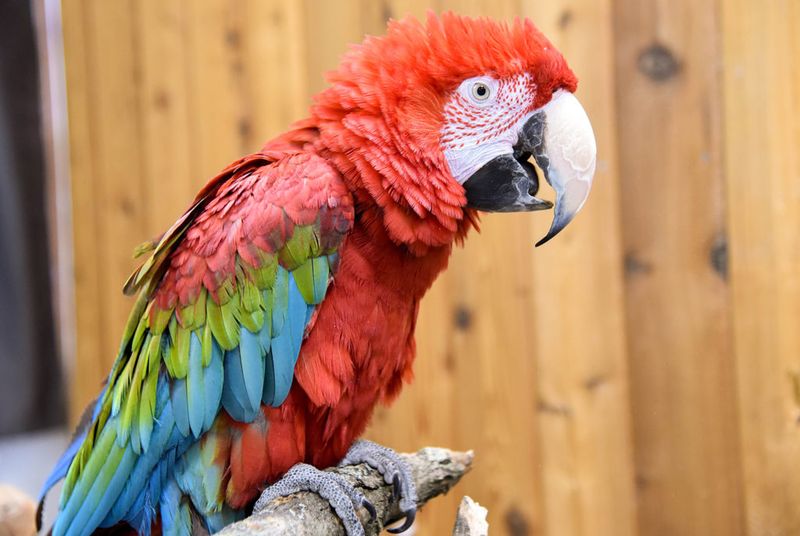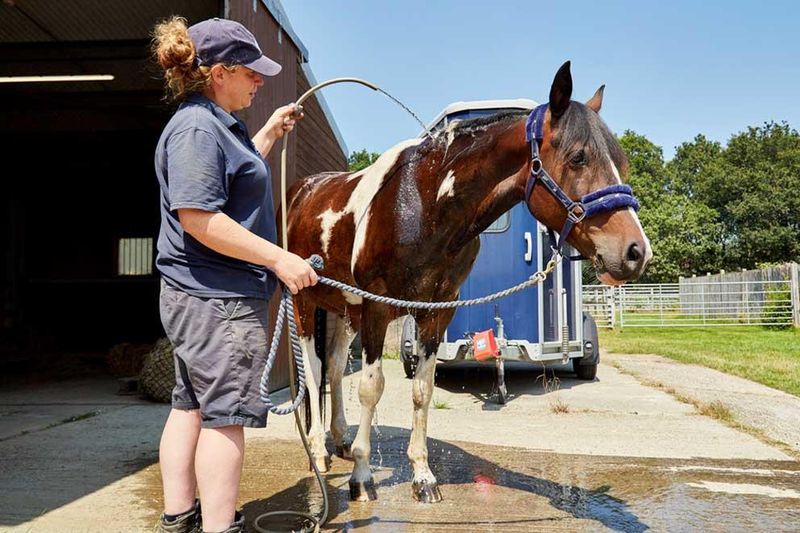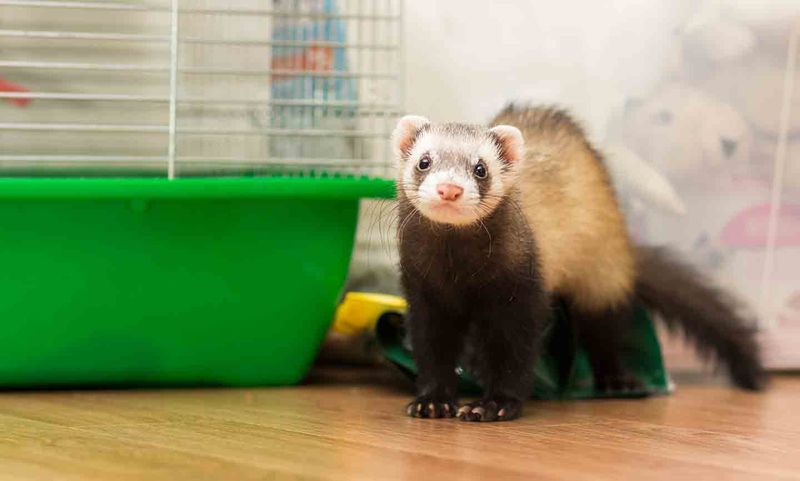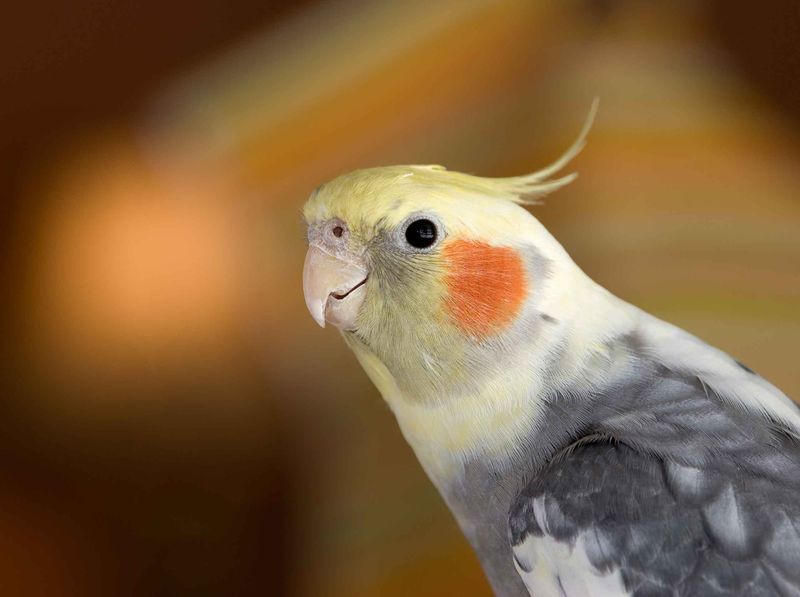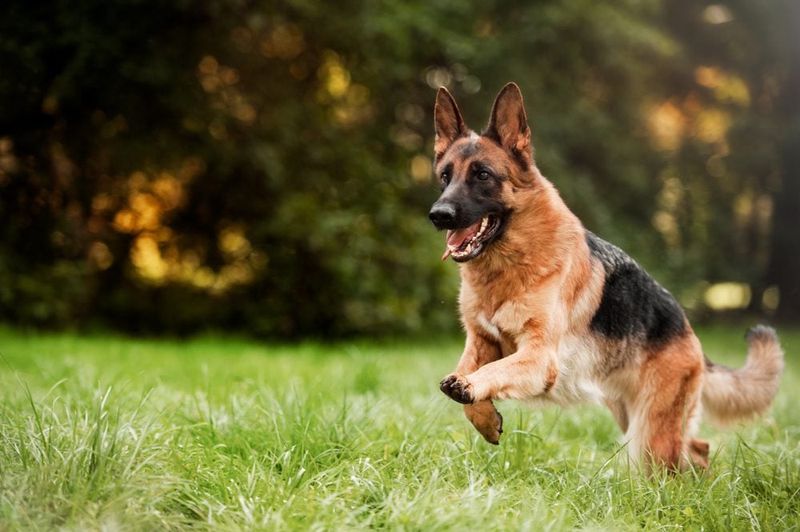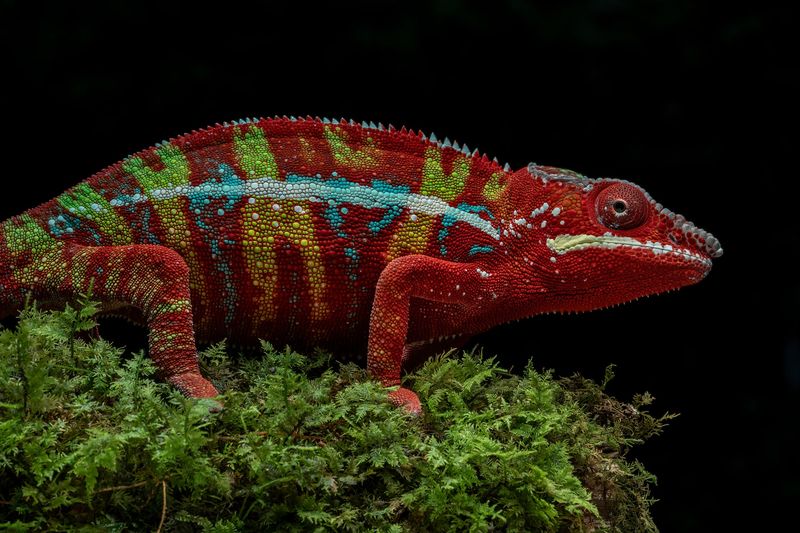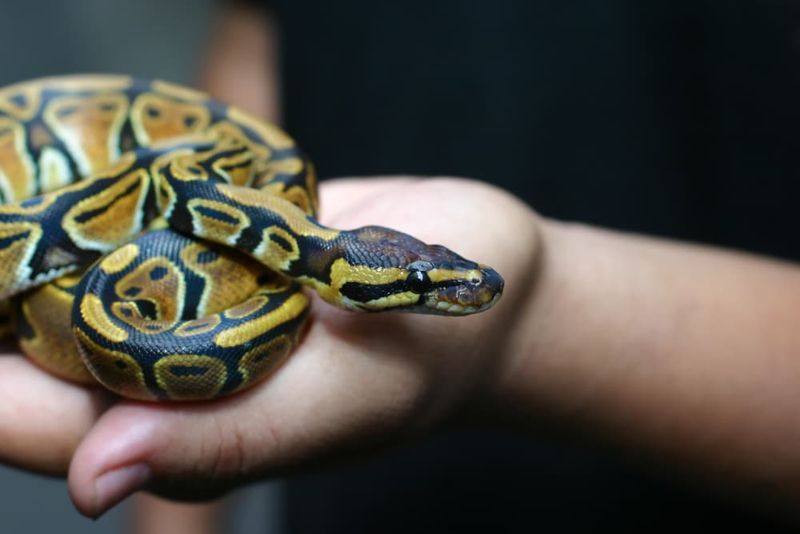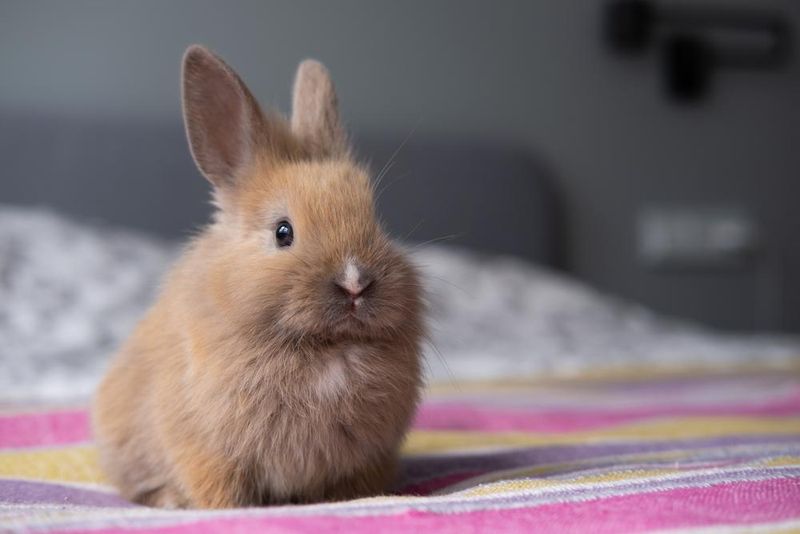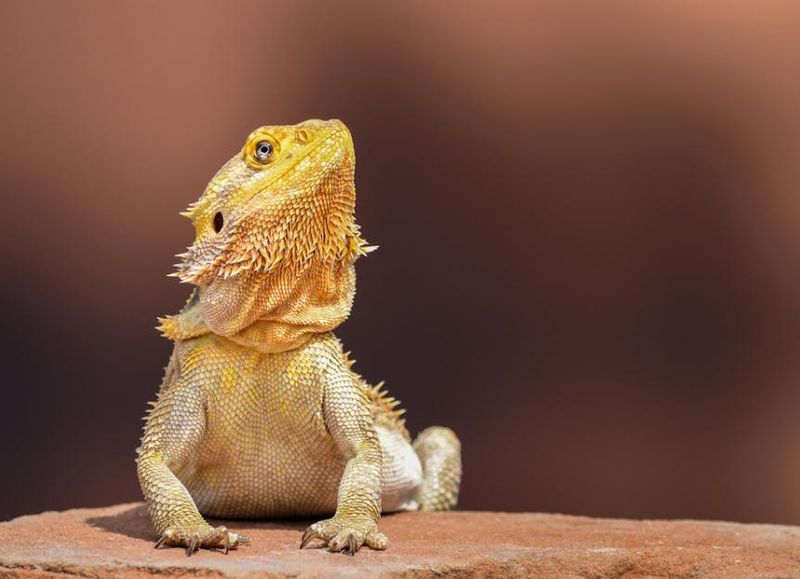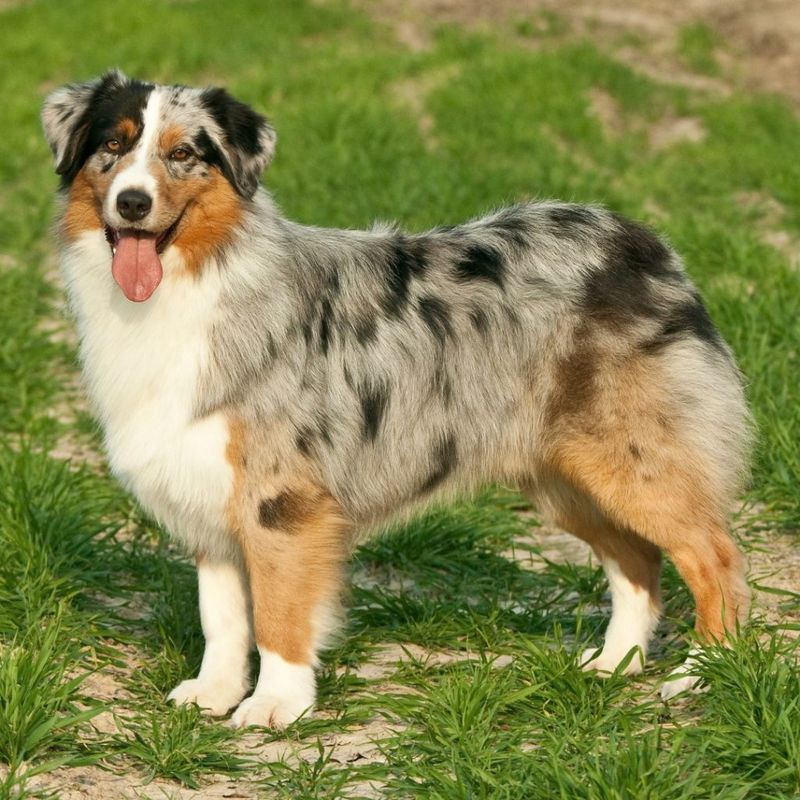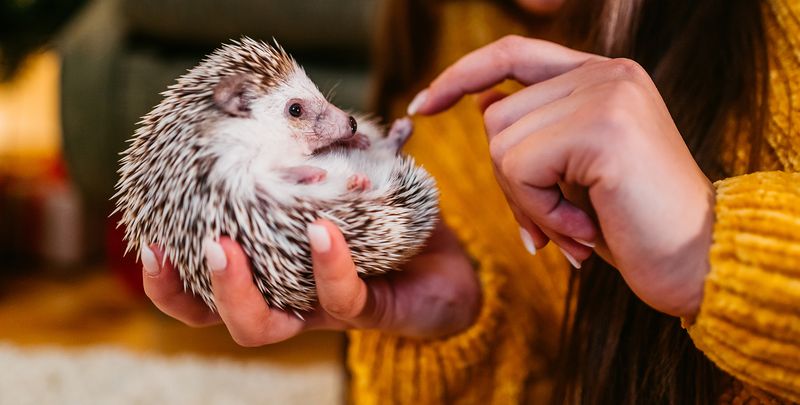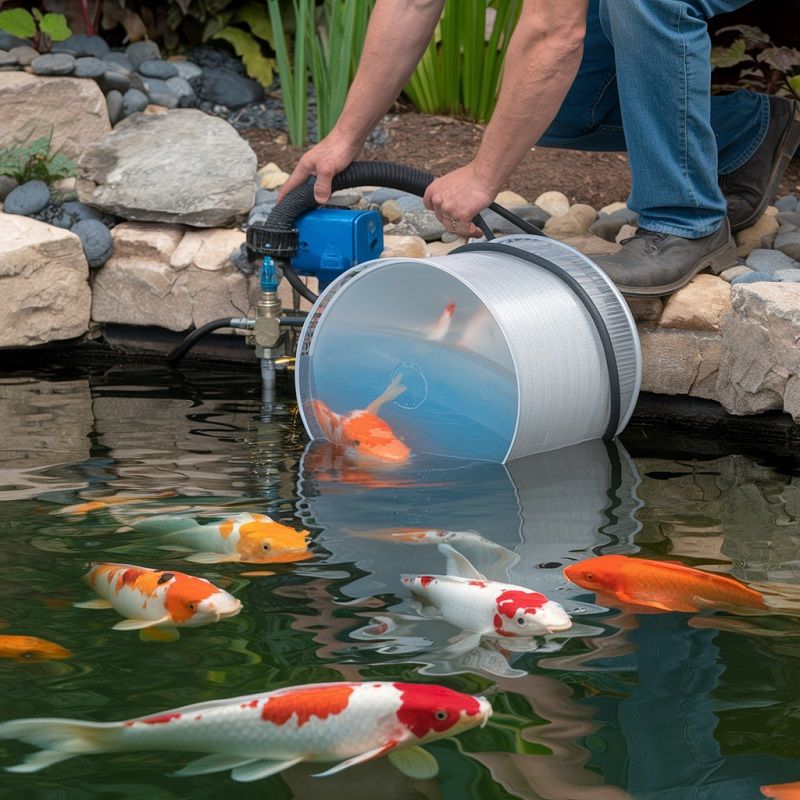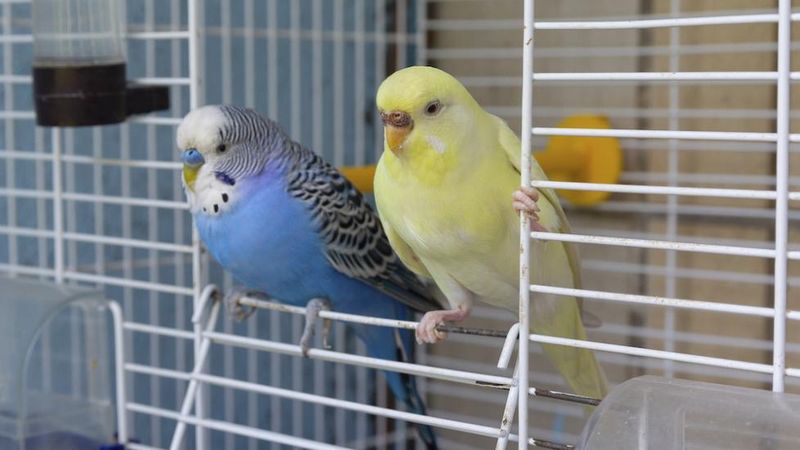📖 Table of Content:
- 1. Border Collies
- 2. African Grey Parrots
- 3. Husky Dogs
- 4. Sugar Gliders
- 5. Bengal Cats
- 6. Macaws
- 7. Horses
- 8. Ferrets
- 9. Cockatiels
- 10. German Shepherds
- 11. Chameleons
- 12. Maine Coon Cats
- 13. Ball Pythons
- 14. Rabbits
- 15. Bearded Dragons
- 16. Australian Shepherds
- 17. Hedgehogs
- 18. Koi Fish
- 19. Siamese Cats
- 20. Parakeets
Bringing a pet into your home can be one of life’s greatest joys, but some animals require far more care than most people realize. Many new pet owners are surprised by how much time, energy, and attention certain animals need to thrive. Before adopting your next furry, feathered, or scaled friend, it’s worth knowing which pets might turn your life upside down with their demands.
1. Border Collies
With intelligence comparable to that of young children, Border Collies are quick thinkers who need constant engagement. Their working-dog heritage drives them to stay active and purposeful. Without enough stimulation, they’ll invent jobs of their own.
Without proper stimulation, these dogs become destructive, digging holes in your yard or reorganizing your furniture when bored. Daily exercise requirements are intense—at least 1-2 hours of active running, fetching, or agility training.
Many owners find themselves surprised by how this breed never seems to tire. Training sessions must be consistent and challenging to keep their brilliant minds occupied.
2. African Grey Parrots
African Greys develop the intelligence of a 5-year-old child but live for 50+ years. Their legendary talking abilities come with emotional needs that rival human relationships.
Owners often underestimate the daily social interaction these birds require—at least 3-4 hours outside their cage with direct human engagement. Without it, they develop destructive habits like feather plucking or self-harm.
Food preparation is another time sink, as these birds need fresh fruits, vegetables, and specialized pellets daily. Their intelligence means they notice everything, including when you’re trying to sneak away for some alone time.
3. Husky Dogs
Apartment living doesn’t suit Huskies, who were bred for pulling sleds across frozen terrain. They require high levels of exercise—long runs, not short walks. While their talkative behavior looks cute in videos, it often proves overwhelming for many owners.
Escape artistry ranks among their top talents. Many owners discover their Husky can jump fences, dig under barriers, or somehow unlock doors. Twice-yearly seasonal shedding turns your home into a fur tornado, requiring daily brushing during these “blowing coat” periods.
Stubborn independence means training requires extraordinary patience and consistency that many first-time owners simply don’t anticipate.
4. Sugar Gliders
Known for their intense need to bond, sugar gliders expect constant companionship. At least two to three hours of daily free time is essential for their mental and physical well-being. These animals are far from low-maintenance.
Their diet demands fresh preparation every single day—specific ratios of fruits, vegetables, protein, and nectar substitutes. Housing requirements include large, tall cages with plenty of climbing toys that need regular cleaning and rearrangement.
The nocturnal nature of sugar gliders means they’re most active when you’re trying to sleep. Many owners don’t realize they make various barking, chattering, and crabbing sounds throughout the night, disrupting sleep patterns.
5. Bengal Cats
The wild spirit of the Bengal shows up in their high-octane activity and bold personality. These cats need more than cozy beds—they crave platforms, ledges, and ceiling-high cat trees. Without these outlets, their energy can quickly turn into chaos.
Water fascination means no fish tank, toilet, or sink is safe from their curious paws. Many Bengal owners install cat-specific water features just to satisfy this obsession.
Their intelligence requires daily puzzle toys and training sessions to prevent boredom-induced destruction. Unlike typical cats, Bengals often demand interactive playtime several times daily, sometimes bringing toys to their humans repeatedly until their play needs are met.
6. Macaws
Macaws scream at decibel levels that can damage human hearing—something neighbors rarely appreciate. Their massive 4-5 foot wingspan requires equally massive cages and daily flight time outside confinement.
Destructive chewing capabilities mean these birds can demolish furniture, door frames, and anything else within reach. Their beaks exert pressure comparable to a dog’s bite, requiring careful handling and training.
Lifespans reaching 80+ years mean these birds often outlive their owners, creating complicated care plans. Food preparation takes significant time, as macaws need fresh, varied diets including nuts they can crack themselves to maintain beak health and mental stimulation.
7. Horses
No matter the weather or occasion, horses must be tended to twice daily without fail. Stall maintenance alone takes up a significant part of the day. Grooming sessions add nearly another hour to the routine.
Exercise needs remain consistent regardless of your schedule or the weather. Training never truly ends, requiring regular sessions to maintain good behavior and prevent dangerous habits.
Financial demands shock many new owners—regular farrier visits every 6-8 weeks, veterinary care, dental work, and unexpected emergency costs averaging thousands yearly. The saying “horses are hay burners” proves accurate as they consume approximately 2% of their body weight daily in hay alone.
8. Ferrets
Though ferrets snooze up to 18 hours a day, their bursts of activity are anything but mellow. They’re expert escape artists and explorers, eager to investigate every inch of your space. Securing your home is essential to keep them safe and out of harm’s way.
Cage cleaning becomes a frequent necessity due to their high metabolism and corresponding bathroom habits. Most owners don’t realize ferrets need at least 4 hours outside their cage daily for proper physical and mental health.
Their specialized diet requires high-quality ferret-specific food, not cat food as commonly misunderstood. Health issues like adrenal disease and insulinoma are common, resulting in frequent vet visits and potentially expensive treatments throughout their 6-8 year lifespan.
9. Cockatiels
Cockatiels form intense bonds with their humans, developing separation anxiety when left alone too long. Their social needs mean daily interaction for at least 2-3 hours outside their cage for mental health.
Cage cleaning becomes a regular chore as these birds create impressive amounts of dust, shed feathers, and food mess. Their respiratory systems are sensitive, requiring homes free from aerosols, non-stick cookware fumes, and other common household pollutants.
Training demands consistency, as these birds quickly pick up both good and problematic behaviors. Many owners underestimate how vocal cockatiels can be—their whistling, chattering, and occasional screaming continue throughout daylight hours, making quiet work-from-home scenarios challenging.
10. German Shepherds
Even as companions, German Shepherds retain the tireless drive of a working dog. Their intelligence demands daily mental engagement through structured activities and games. Without it, boredom quickly leads to destructive behavior.
Physical exercise needs exceed what most owners anticipate, requiring 1-2 hours of active movement daily. Without proper outlets, these dogs redirect their energy into problematic behaviors like excessive barking or chewing.
Their thick double coat creates a fur situation that many owners aren’t prepared for—daily brushing during shedding seasons becomes mandatory. Training must be consistent and fair, as these dogs notice and remember inconsistencies, potentially leading to confusion and behavior problems.
11. Chameleons
Keeping a chameleon healthy involves a level of environmental control that surprises most new owners. Humidity must be checked several times a day, typically using misting tools or foggers. Both require consistent maintenance to avoid failure.
Their dietary needs include live insects that must be gut-loaded with nutrients before feeding. Many owners don’t realize they’ll need to maintain cricket or roach colonies just to feed their pet.
Specialized UVB lighting requires careful positioning and regular replacement every 6-12 months, regardless of whether the bulb still produces visible light. Temperature gradients must be precisely maintained throughout the enclosure, often requiring multiple heating and cooling elements that need constant monitoring.
12. Maine Coon Cats
Known for their size, Maine Coons often reach 15 to 25 pounds, most of it strong, lean muscle. Their luxurious fur may look beautiful, but it tangles fast without frequent grooming. Matting is especially common in spots that are easy to overlook.
Daily brushing sessions become necessary rather than optional, particularly during seasonal shedding periods. Many owners don’t anticipate the time commitment of keeping these gentle giants properly groomed.
Their playful, kitten-like behavior continues well into adulthood, requiring interactive play sessions to prevent boredom and weight issues. Large litter boxes become a necessity, along with frequent cleaning to accommodate their proportionally larger waste production.
13. Ball Pythons
Ball pythons live 20-30 years, a commitment many new owners fail to fully consider. Their enclosures require precise temperature gradients and humidity levels that must be monitored multiple times daily.
Feeding involves thawing frozen rodents to exact temperatures—a process that takes planning and isn’t for the squeamish. Many owners don’t realize these snakes sometimes go on feeding strikes lasting months, causing stress and frequent vet consultations.
Handling sessions need to be regular but limited to prevent stress, requiring a balance that takes experience to develop. Shedding cycles demand especially careful monitoring of humidity levels and often hands-on assistance if problems develop, turning a natural process into a potential emergency.
14. Rabbits
Caring for rabbits involves daily cage cleaning, which often proves more demanding than expected. Their delicate digestive systems need close attention, with eating habits carefully monitored. Small changes in appetite can point to serious health problems.
Contrary to popular belief, rabbits aren’t low-maintenance pets. They need several hours of supervised exercise outside their enclosures daily in rabbit-proofed areas.
Their teeth grow continuously, requiring special diets centered around hay to promote proper wear. Grooming becomes a significant time investment, especially for long-haired breeds that need daily brushing to prevent painful matting and digestive blockages from ingested fur.
15. Bearded Dragons
Eating habits of bearded dragons resemble those of growing teenagers—endless and costly. They need fresh vegetables and live bugs every day, each meal carefully coated with essential supplements. Sticking to a precise feeding schedule is crucial.
Enclosure maintenance becomes a significant time investment, with spot cleaning needed daily and deep cleaning weekly. UVB lighting requirements mean regular bulb replacements regardless of whether they still produce visible light.
Temperature monitoring throughout the day ensures proper digestion and health, often requiring adjustments as seasons change. Many owners don’t realize these reptiles need regular bathing sessions to stay properly hydrated and maintain healthy shedding cycles.
16. Australian Shepherds
These dogs come with an unrelenting work ethic that keeps them constantly on the go. Herding instincts may cause them to nip at children or chase after anything in motion if left unchecked. Channeling their energy is essential to avoid behavioral issues.
Mental stimulation requirements exceed most dogs—training sessions, puzzle toys, and challenging activities must happen daily. Physical exercise needs are equally demanding, with 1-2 hours of active running or playing required for basic sanity.
Their “velcro dog” tendencies mean bathroom privacy becomes optional in your home. Many owners don’t anticipate how these dogs struggle with being alone, developing separation anxiety that requires careful training to manage.
17. Hedgehogs
Nighttime socializing is essential for hedgehogs, yet it clashes with the typical human sleep cycle. Their nocturnal behavior means they’re awake and alert when owners want to rest. Many find this difference hard to manage.
Temperature requirements are strict—too cold and they attempt hibernation, too warm and they overheat. This means constant monitoring and adjustment of their environment.
Bathing becomes a regular necessity due to their habit of running in wheels that quickly become soiled. Their specialized diet needs careful planning, with most commercial foods requiring supplementation with insects and specific vegetables. Many owners don’t realize hedgehogs need foot baths after exercise to prevent dangerous infections from developing in their tiny feet.
18. Koi Fish
With lifespans ranging from two decades to more than 100 years, koi fish require care that often spans generations. Regular water testing several times per week is necessary to monitor ammonia, nitrites, nitrates, pH, and KH. Maintaining optimal water conditions is critical to their long-term health.
Seasonal maintenance demands change dramatically throughout the year. Spring cleaning, fall preparations for winter, and summer algae management each require specialized knowledge and time.
Feeding becomes surprisingly complex, with different food types needed based on water temperature and season. Many owners don’t realize that koi require winter preparations, including reduced feeding schedules, specialized cold-water bacterial maintenance, and sometimes heating systems in colder climates.
19. Siamese Cats
Siamese cats talk constantly—their loud, distinctive vocalizations demand responses and attention. Their intelligence requires mental stimulation through interactive toys, training sessions, and puzzle feeders to prevent destructive behaviors.
Social needs exceed most cat breeds, with many Siamese becoming depressed when left alone for standard workdays. Their strong opinions about everything from food to litter box placement means you’ll need to accommodate their preferences or face their vocal disapproval.
Exercise requirements rival some dog breeds, with daily play sessions needed to burn energy. Many owners don’t realize these cats often learn to open doors, cabinets, and even refrigerators, requiring childproofing measures throughout the home.
20. Parakeets
Many first-time parakeet owners are surprised by the amount of mess these birds create. Seed shells scatter several feet beyond the cage due to their constant husking. Regular cleaning around the cage becomes a necessary daily chore.
Social needs mean these birds require at least 2-3 hours outside their cages daily for proper mental health. Their flock mentality often necessitates keeping multiple birds, doubling care requirements.
Cage cleaning becomes a frequent necessity due to droppings and food debris. Many owners don’t realize these small birds need regular nail and beak maintenance, along with wing clip decisions that affect their safety and exercise capabilities.
